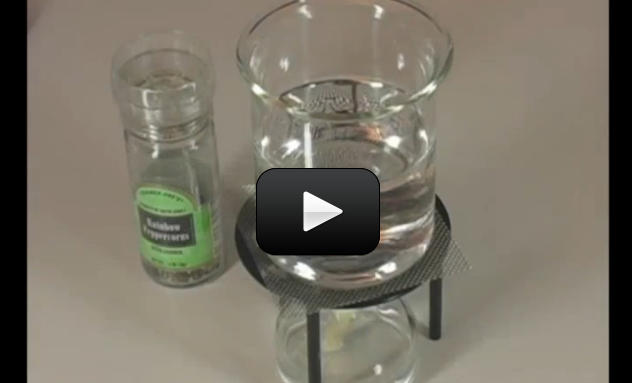Every time I’m served a hot bowl of soup or a cup of coffee with cream I love to sit and watch the convection currents. You may look a little silly staring at your soup but give it a try sometime!
Convection is a little more difficult to understand than conduction. Heat is transferred by convection by moving currents of a gas or a liquid. Hot air rises and cold air sinks. It turns out, that hot liquid rises and cold liquid sinks as well.
Room heaters generally work by convection. The heater heats up the air next to it which makes the air rise. As the air rises it pulls more air in to take its place which then heats up that air and makes it rise as well. As the air get close to the ceiling it may cool. The cooler air sinks to the ground and gets pulled back near the heat source. There it heats up again and rises back up.
This movement of heating and cooling air is convection and it can eventually heat an entire room or a pot of soup. This experiment should allow you to see convection currents.
Please login or register to read the rest of this content.


The flakes are much larger and have more surface area, and also take on more of the water and don’t move as point particles. I really like how you are experimenting! Great job!
We used Italian seasoning and it did not move as much as the pepper. We wonder why?
1:57
It kind of looks like some sort of (dirty) aquarium… lol
Sure! Try it and see!
can you use small objects instead of pepper and food coloring?
Sorry, I didn’t put my name on my last comment.
Holly Thomson 11
When I think of convection, I think of the setting on some ovens. For me thinking of that helps me understand convection.